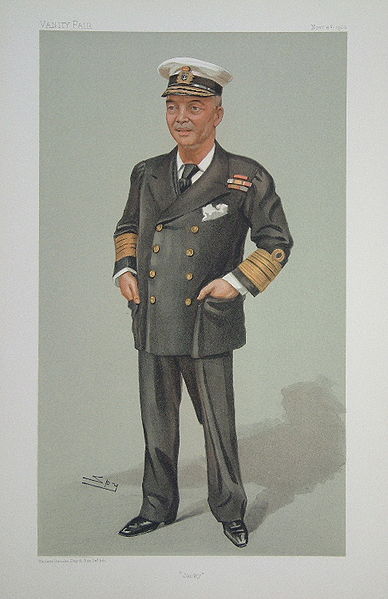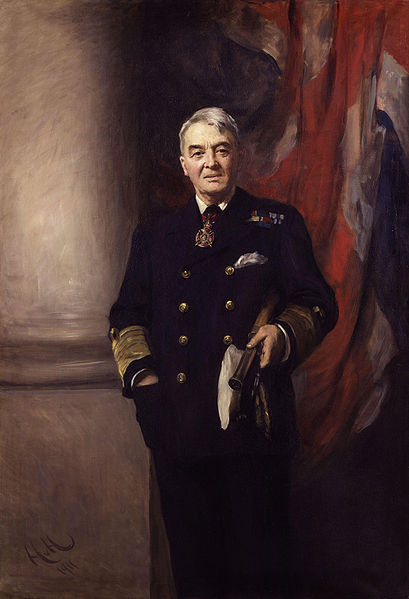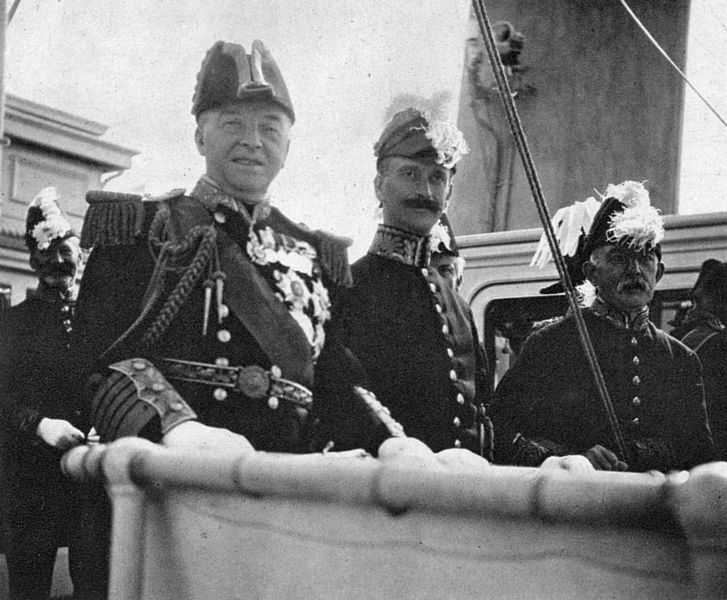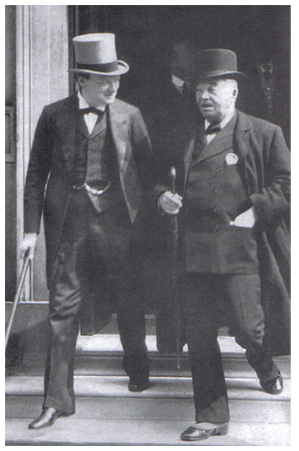<Back to Index>
- Chemist François Vincent Raspail, 1794
- Painter Pompeo Girolamo Batoni, 1708
- Admiral of the Fleet of the Royal Navy John Arbuthnot "Jackie" Fisher, 1841
PAGE SPONSOR
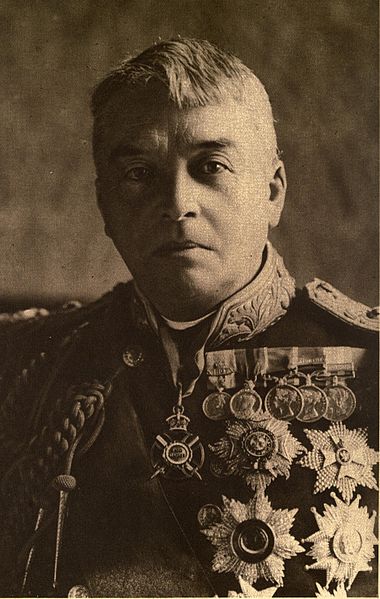
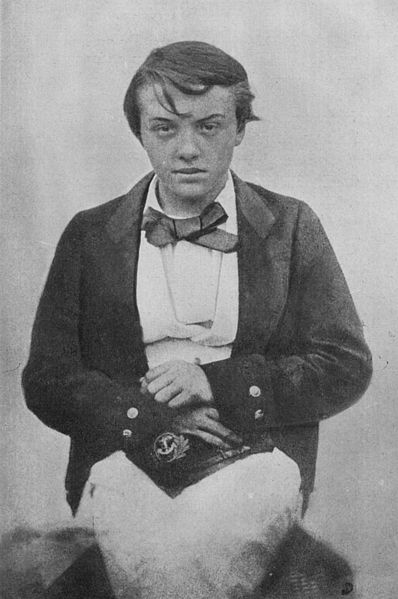
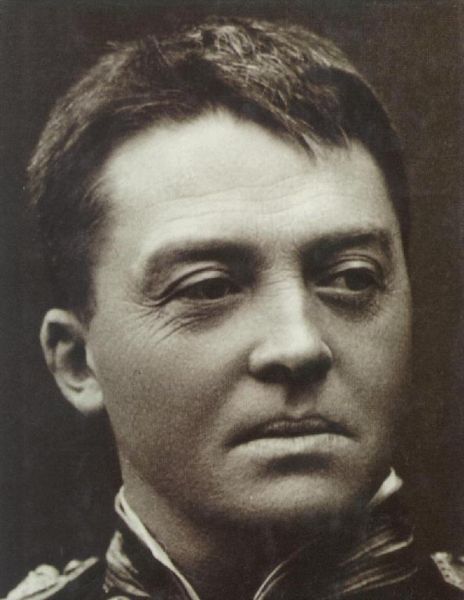
Admiral of the Fleet John Arbuthnot "Jacky" Fisher, 1st Baron Fisher of Kilverstone, GCB, OM, GCVO (25 January 1841 – 10 July 1920) was a British admiral known for his efforts at naval reform. He had a huge influence on the Royal Navy in a career spanning more than 60 years, starting in a navy of wooden sailing ships armed with muzzle loading cannon and ending in one of steel hulled battlecruisers, submarines and the first aircraft carriers. The argumentative, energetic, reform minded Fisher is often considered the second most important figure in British naval history, after Lord Nelson.
Fisher is primarily celebrated as an innovator, strategist and developer of the navy rather than a seagoing admiral involved in major battles, although in his career he experienced all these things. When appointed First Sea Lord he removed 150 ships then on active service but which were no longer useful and set about constructing modern replacements, creating a modern fleet prepared to meet Germany during World War I.
Fisher saw the need to improve the range, accuracy and firing rate of naval gunnery, and was an early proponent of the use of the torpedo, which he believed would supersede big guns for use against ships. As Controller, he introduced torpedo boat destroyers as a class of ship intended for defence against attack from torpedo boats or submarines. As First Sea Lord, he was responsible for the construction of HMS Dreadnought, the first all big gun battleship, but he also believed that submarines would become increasingly important and urged their development. He was involved with the introduction of turbine engines to replace reciprocating designs, and the introduction of oil fuelling to replace coal. He introduced daily baked bread on board ships, whereas when he entered the service it was customary to eat hard biscuits, frequently infested by weevils.
Fisher was short and stocky with a round face. In later years, some insinuated that he had Asian ancestry due to his features and the yellow cast of his skin. His colour resulted from dysentery and malaria in middle life, which nearly caused his death. He had a fixed and compelling gaze when addressing someone, which gave little clue to his feelings. Fisher was energetic, ambitious, enthusiastic and clever. A shipmate described him as "easily the most interesting midshipman I ever met". When addressing someone he could become carried away with the point he was seeking to make, and on one occasion, the king asked him to stop shaking his fist in his face.
Throughout his life he was a religious man and attended church regularly when ashore. He had a passion for sermons and might attend two or three services in a day to hear them, which he would 'discuss afterwards with great animation'. However, he was discreet in expressing his religious views because he feared public attention might hinder his professional career.
He was not keen on sport, but he was a highly proficient dancer. Fisher employed his dancing skill later in life to charm a number of important ladies. He became interested in dancing in 1877 and insisted that the officers of his ship learn to dance. Fisher cancelled the leave of midshipmen who would not take part. He introduced the practice of junior officers dancing on deck when the band was playing for senior officers wardroom dinners. This practice spread through the fleet. He broke with the then ball tradition of dancing with a different partner for each dance, instead adopting the scandalous habit of choosing one good dancer as his partner for the evening. His ability to charm all-comers of all social classes made up for his sometimes blunt or tactless comments. He suffered from seasickness throughout his life.
Fisher's aim was 'efficiency of the fleet and its instant readiness for war', which won him support amongst a certain kind of navy officer. He believed in advancing the most able, rather than the longest serving. This upset those he passed over. Thus, he divided the navy into those who approved of his innovations and those who did not. As he became older and more senior he also became more autocratic and commented, 'Anyone who opposes me, I crush'. He believed that nations fought wars for material gain, and that maintaining a strong navy deterred other nations from engaging it in battle, thus decreasing the likelihood of war, On the British fleet rests the British Empire. Fisher also believed that the risk of catastrophe in a sea battle was far greater than on land: a war could be lost or won in a day at sea, with no hope of replacing lost ships, but an army could be rebuilt quickly. When an arms race broke out between Germany and Britain to build larger navies, the German Kaiser commented 'I admire Fisher, I say nothing against him. If I was in his place I should do all that he has done and I should do all that I know he has in mind to do'. In 1911, Fisher predicted that war with Germany would break out in October 1914, following the anticipated completion date of work on the Kiel Canal to allow the passage of battleships. However, the Kiel Canal was completed in July, and war commenced August 1914. Fisher was forced to retire, but the candidate he chose to command the British fleet in its major engagement against Germany at The Battle of Jutland, Sir John Jellicoe, was appointed to this role.
John Arbuthnot Fisher was born on 25 January 1841 on the Wavenden Estate at Rambodde in Ceylon (now Sri Lanka). He was the eldest of eleven children (of whom seven survived infancy) born to Sophie Fisher and Captain William Fisher, a British Army officer in the 78th Highlanders, who had been an aide - de - camp to the former governor, Sir Robert Horton, Bt., and was serving as a staff officer at Kandy. Fisher commented, 'My mother was a most magnificent and handsome, extremely young woman... My father was 6 feet 2 inches.., also especially handsome.. Why I am ugly is one of those puzzles of physiology which are beyond finding out'.
William Fisher sold his commission the year John was born, and became a coffee planter and late Chief Superintendent of police. He incurred such debt on his two coffee plantations that he could barely support his growing family. At the age of 6 John (who was always known within the family as "Jack") was sent to England to live with his maternal grandfather, Charles Lambe, in New Bond Street, London. His grandfather had also lost money and the family survived by renting out rooms in their home. John's younger brother, Frederic William Fisher, joined the Royal Navy and reached the rank of admiral, and his youngest surviving sibling Philip became a navy lieutenant on Atalanta before drowning in an 1880 storm.
William Fisher was killed in a riding accident when John was 15. John's relationship with his mother Sophie suffered from their separation, and he never saw her again. However, he continued to send her an allowance until her death. In 1870, she suggested visiting Fisher in England, but he dissuaded her as strongly as he could. Fisher wrote to his wife: "I hate the very thought of it and really, I don't want to see her. I don't see why I should as I haven't the slightest recollection of her."
Fisher married Frances Katharine Josepha Broughton, the daughter of Rev. Thomas Delves Broughton and Frances Corkran, on 4 April 1866 while stationed at Portsmouth. Kitty's two brothers were both naval officers. According to a cousin, she believed that Jack would rise "to the top of the tree." They remained married until her death in July 1918. They had a son, Cecil Vavasseur, 2nd Baron Fisher (1868 – 1955), and three daughters, Beatrix Alice (1867 – 1930), Dorothy Sybil (1873 – 1962) and Pamela Mary (1876 – 1949), who all married naval officers.
Fisher's father ultimately aided his entry into the navy, via his godmother Lady Horton, widow of the
governor of Ceylon to whom William Fisher had been ADC. She prevailed upon a neighbour, Admiral Sir William Parker (the last of Nelson's captains), to nominate John as a naval cadet. The entry examination consisted of writing out the Lord's Prayer and jumping naked over a chair. He formally entered the Royal Navy on 13 July 1854, aged 13, on board Nelson's former flagship, Victory, at Portsmouth. On 29 July he joined HMS Calcutta, an old ship of the line. She
was built of wood, in 1831, with 84 smooth - bore muzzle - loading guns
arranged on two gun decks, and relied entirely on sail for propulsion. She had a crew of 700, and discipline was strictly enforced by the "hard - bitten Captain Stopford". Fisher fainted when he witnessed eight men flogged on his first day.
On 2 March 1856, Fisher was posted to HMS Agamemnon, and was sent to Constantinople (now Istanbul) to join her. He arrived on 19 May, just as the war was ending. After a tour around the Dardanelles picking up troops and baggage, Agamemnon returned to England where the crew were paid off.
Promotion to midshipman came on 12 July 1856 and Fisher joined a 21-gun steam corvette, HMS Highflyer, part of the China Station. He was to spend the next five years in Chinese waters, seeing action in the Second Opium War, 1856 – 1860. The Highflyer's captain, Captain Shadwell, was an expert on naval astronomy (subsequently being appointed a Fellow of the Royal Society in 1861) and he taught Fisher much about navigation with spectacular later results. When Shadwell was replaced as captain following an injury in action, he gave Fisher a pair of studs engraved with his family motto 'Loyal au Mort', which Fisher was to use for the rest of his life.
Fisher passed his board for sub - lieutenant (the rank was called mate at the time) on his nineteenth birthday, 25 January 1860. He was transferred three months later to the steam frigate HMS Chesapeake as an acting lieutenant. Shortly afterwards, Fisher had his first brief command: taking the yacht of the China Squadron's admiral - the paddle - gunboat HMS Coromandel - from Hong Kong to Canton (nowadays Guangzhou), a voyage of four days.
He was transferred, on 12 June 1860 to the paddle - sloop HMS Furious where he saw sufficient action to add the Taku and Canton clasps to his China service medal. Furious left Hong Kong and the China Station in March 1861 and, after a leisurely voyage home, paid off in Portsmouth on 30 August. Captain Oliver Jones of the Furious was entirely different to Shadwell: Fisher wrote there was a mutiny on board within his first fortnight, that Jones terrorised his crew and disobeyed orders given to him. Nonetheless, by the end of the tour he also was impressed by Fisher.
That November, Fisher sat his lieutenant's examination and passed with flying colours. He received top grades in seamanship and gunnery, and achieved the highest score ever - 963/1000 - for navigation. For this, he was awarded the Beaufort Testimonial, an annual prize of books and instruments but, in the meantime, he had to wait around, unpaid, until his appointment came through officially. He was one of the last Royal Navy officers to receive basic training entirely at sea.
From January 1862 to March 1863, Fisher returned to the payroll at the navy's principal gunnery school aboard HMS Excellent, a three decker moored in Portsmouth harbour. During this time, Excellent was evaluating the performance of the "revolutionary" Armstrong breech - loading guns against the traditional Whitworth muzzle - loading type. During free afternoons Fisher would walk the downs, shouting to practice his command voice. He spent 15 of the next 25 years in four tours of duty at Portsmouth concerned with development of gunnery and torpedoes.
In March 1863, Fisher was appointed Gunnery Lieutenant to HMS Warrior, the first all - iron sea - going armoured battleship and the most powerful ship in the fleet. Built in 1859, she marked the beginning of the end of the Age of Sail and, coincidentally, was armed with both Armstrong breech - loading and Whitworth muzzle - loading guns. Fisher noted he was popular amongst his brother officers because he frequently stayed on board when others went ashore and could take duty for them.
Fisher returned to Excellent in 1864 as a gunnery instructor, where he remained until 1869. Towards the end of his posting he became interested in torpedoes, which were invented during the 1860s, and championed their cause as a relatively simple weapon capable of sinking a battleship. His expertise with torpedoes led to his being invited to Germany in June 1869 for the founding ceremony of a new naval base at Wilhelmshaven, where he met King William I of Prussia (soon to become German emperor), Bismarck and Moltke. Perhaps inspired by the visit, he started preparing a paper on the design, construction and management of electrical torpedoes, the cutting edge technology of the time.
On 2 August 1869, "at the early age of twenty-eight", Fisher was promoted to commander. On 8 November, he was posted as second - in - command of HMS Donegal, serving under Captain Hewett, a Crimean War Victoria Cross holder. Donegal was a Conqueror - class ship of the line, with auxiliary screw propulsion. She plied between Portsmouth and Hong Kong, taking out relief crews and bringing home the crews they replaced. During this time he completed his torpedoes treatise.
In May 1870, he transferred, again as second in command, to HMS Ocean, flagship of the China Station. It was whilst he was on Ocean that he wrote an eight page memoir: "Naval Tactics", which Captain J.G. Goodenough had printed for private circulation. He installed a system of electrical firing so that all guns could be fired simultaneously, making Ocean the first vessel to be so equipped. Fisher noted in his letters that he greatly missed his wife, but also missed his work on torpedoes and the access to important people possible with a posting in England.
In 1872, he returned to England to the gunnery school Excellent, this time as head of torpedo and mine training, during which time he split the Torpedo Branch off from Excellent, forming a separate establishment for it called HMS Vernon.
His duties included lecturing, and negotiating the purchase of the
navy's first Whitehead self - propelling torpedo. In order to promote the
school, he invited politicians and journalists to attend lectures and
organised demonstrations. This produced mixed reactions amongst some
officers, who did not approve of his showmanship. He was promoted to captain on 30 October 1874, aged thirty-three in time to be its first commander. HMS Vernon consisted of the hulk of Symonds' famous 1832 50 gun sailing frigate, and the hulk of the 26 gun steam frigate Ariadne provided accommodation. Vesuvius, a torpedo boat of 245 tons, was Vernon's experimental tender for the conduct of torpedo trials. They were moored in Portsmouth harbour. In 1876 he served on the admiralty torpedo committee.
- September 1876 – March 1877: On half-pay with his family.
- 30 January 1877 – 1 March 1877: Commanding HMS Hercules.
Fisher was appointed to command HMS Bellerophon as flag captain to the Admiral of the North America and West Indies Station, Astley Cooper - Key from 2 March 1877 to 4 June 1878. Bellerophon had been in the dockyard for repairs, so the new crew was less than perfect in carrying out their duties. Fisher told them I intend to give you hell for three months, and if you have not come up to my standard in that time you'll have hell for another three months. Midshipman (later Admiral) A.H. Gordon Moore reported, Fisher was a very exacting master and I had at times long and arduous duties, long hours at the engine room telegraphs in cold fog, etc., and the least inattention was punished. It was, I think, his way of proving us, for he always rewarded us in some way when an extra hard bit of work was over.
Cooper Key was transferred to a special squadron operating in the Channel formed to combat fears of war with Russia. Fisher went with him as flag captain of HMS Hercules from 7 June to 21 August 1878. From 22 August to 12 September he transferred still as flag captain under Cooper Key to HMS Valorous. At this time Fisher first became a proponent of the new compass being designed by Sir William Thomson which incorporated corrections for the deviation caused by the metal in iron ships. Between 12 September 1878 and 1 January 1879 he was again on leave.
From 9 January to 24 July 1879 Fisher commanded HMS Pallas serving in the Mediterranean Command under Geoffrey Phipps Hornby. Pallas was in poor condition, having a chain passed around the ship to hold the armour plates in place. The tour included an official visit to Istanbul where Fisher dined with the sultan of the Ottoman Empire from gold cups and plates. He then returned to the UK for two months leave at half pay, visiting Bruges with his family.
His next posting starting 25 September 1879 was to HMS Northampton as Flag Captain to Sir Leopold McClintock, commanding the North American squadron. Northampton was a new ship with a number of innovations, including twin screws, searchlights and telephones, as well as being armed with torpedoes. It was fitted with an experimental Thompson - designed compass, which the inventor was on hand to adjust. Three days were spent attempting and failing to adjust the compass, with Thomson becoming increasingly bad tempered, until it was noticed that by accident the degree card had only been marked with 359 degrees instead of 360. The ship was fitted with a new design of lamp created by Captain Philip Colomb, who came on board to inspect them. As a joke, Fisher arranged for anything that could go wrong with the lamps to do so, sending Colomb away disheartened over his invention (although Fisher officially reported favourably about the lamps). On another occasion, the naval hospital at Halifax requested some flags to fly for the Queen's birthday. Fisher obliged, but sent only yellow and black flags signifying plague and quarantine. On the other hand, he worked hard at improving his ship. As reported by his second in command, Commander Wilmot Fawkes, the ship carried out 150 runs with torpedoes in a fortnight, whereas the whole rest of the navy only performed 200 in a year.
Fisher's brother Philip was serving on the training ship Atalanta which disappeared somewhere between the West Indies and England, believed lost in a storm. Northampton was
one of the ships sent to search for her, but without result. In January
1881 Fisher received news of his appointment to the new ironclad
battleship HMS Inflexible. Admiral McClintock commented, Everyone
regrets the departure of Captain Fisher, but I fancy we shall not fully
realize our loss until he is gone... Since his nomination to the Inflexible, his spirits have returned and daily increased, and now he almost requires wiring down. The ship was still building so Fisher was temporarily appointed to HMS Duke of Wellington, flagship of the port admiral at Portsmouth between 30 January and 4 July 1881.
Fisher was considered sufficiently able, with recommendations following all of his postings, to be appointed captain of the newly completed battleship HMS Inflexible. Inflexible had the largest guns and thickest armour of any ship in the navy, but still carried masts and sails and had slow, muzzle - loading guns. She had been seven years under construction and had many innovations built into her, including electric lighting and torpedo tubes, but with such a tortuous layout that crew became lost. The sails were never used for propulsion, but because a ship's performance was partly judged on the speed with which a ship could set sails, Fisher was obliged to drill the crew in their use.
In spring 1882 Inflexible was part of the Mediterranean Fleet and was assigned for protection of Queen Victoria during a visit to Menton on the Riviera. This was intended as a reminder of British naval prowess to the French, but allowed Fisher to meet Victoria and her grandson, Prince Heinrich of Prussia who
later became admiral of the German navy. Victoria was impressed by
Fisher, as she had been by his brother Philip who had served on royal
yachts and for whom she had arranged the ill fated posting to Atalanta. Support from the royal family was to be important for his career, particularly when his innovations drew criticism.
Inflexible took part in the 1882 Anglo - Egyptian War, bombarding the port of Alexandria as part of Admiral Seymour's fleet. Fisher was placed in charge of a landing party which was quartered in the Khedive's palace. Lacking means of reconnaissance he devised a plan to armour a train with iron plates, machine gun and cannon. This became celebrated and widely reported by correspondents, so that its inventor, Fisher, came to the attention of the public for the first time as a hero. Shore duty had the unfortunate effect that Fisher became seriously ill with dysentery and malaria. He refused to take sick leave, but eventually was ordered home by Lord Northbrook who commented, 'the Admiralty could build another Inflexible, but not another Fisher'.
During this time he became a close friend of the future King Edward VII and Queen Alexandra. He was appointed a Companion of the Bath (CB) in 1882.
From January – April 1883 Fisher was on half pay recovering from his illness. In January he was invited to visit Osborne House for a fortnight by Queen Victoria, concerned about the charming Captain Fisher. Fisher, having entered the navy penniless and unknown, was delighted.
In April 1883 Fisher had recovered sufficiently to return to duty and was appointed commander of HMS Excellent. He did not return to sea for fifteen years. He remained with Excellent for two years until June 1885, where he gained a following of officers concerned with the poor offensive capabilities of the fleet, including John Jellicoe and Percy Scott. For the next 15 months he had no naval command and still suffered the effects of his illness. He took to visiting Marienbad, which was famous amongst notable society for its restoring climate, and went there regularly in future years.
From June – July 1885 Fisher served a short posting to HMS Minotaur in the Baltic under Admiral Hornby, following the Panjdeh Incident, which led to fear of war with Russia. He returned to Excellent and remained there until November 1885.
From November 1886 to 1890, he was Director of Naval Ordnance, responsible for weapons and munitions. He was responsible for the development of quick firing guns to be used against the growing threat from torpedo boats, and particularly claimed responsibility for removing wooden boarding pikes from navy ships. The navy did not have responsibility for manufacture and supply of weapons and ammunition, which was in the hands of the War Office. Fisher began a long campaign to return this responsibility to the admiralty, but did not finally succeed until he later became First Sea Lord. He was appointed Aide - de - Camp to the Queen in 1887, and promoted Rear - Admiral in August 1890.
Fisher was Admiral Superintendent of the dockyard at Portsmouth for a few months from May 1891 – February 1892, where he concerned himself with improving the speed of operations. Royal Sovereign was built in two years rather than three, while changing a barbette gun on a ship was reduced from a two day operation to two hours. His example obliged all shipyards, both navy and private, to reduce the time they took to complete a ship, making savings in cost and allowing new designs to enter service more rapidly. He used all the tricks he could devise: an official who refused to step outside his office to personally supervise the work was offered a promotion to the tropics; he would find out the name of one or two men amongst a work crew and then make a point of complimenting them on their work and using their names, giving the impression he knew everyone personally; he took a chair and table into the yard where some operation was to be carried out and declared his intention to stay there until the operation was completed. He observed, when you are told a thing is impossible, that there are insuperable objections, then is the time to fight like the devil.
His next appointment was Third Sea Lord, the naval officer with overall responsibility for provision of ships and equipment. He presided over the development of torpedo boat destroyers armed with quick firing small calibre guns (called destroyers at Fisher's suggestion). A suggestion for the boats was brought to the admiralty in 1892 by Mr. Alfred Yarrow of shipbuilders Thornycroft and Yarrow, who reported that he had obtained plans of new torpedo boats being built by the French, and he could build a faster boat to defend against them. Torpedo boats had become a major threat as they were cheap but potentially able to sink the largest battleships, and France had built large numbers of them. The first destroyers were considered a success and more were ordered, but Fisher immediately ran into trouble by insisting that all shipbuilders, not just Yarrows, should be invited to build boats to Yarrow's design. A similar (though opposite) difficulty with vested interests arose over the introduction of water tube boilers into navy ships, which held out the promise of improved fuel efficiency and greater speed. The first examples were used by Thornycroft and Yarrow in 1892, and then were trialled in the gunboat Sharpshooter. However, an attempt to specify similar boilers for new cruisers in 1894 led to questions in the House of Commons, and opposition from shipbuilders who did not want to invest in the new technology. The matter continued for several years after Fisher moved on to a new posting, with a parliamentary enquiry rejecting the new boilers. Eventually the new design was adopted, but only after another eighteen ships had been built using the older design, with consequent poorer performance than necessary.
Fisher was knighted in the Queen's Birthday Honours of 1894 as a Knight Commander of the Bath, promoted to Vice - Admiral in 1896, and put in charge of the North America and West Indies Station in 1897. In 1898 the Fashoda Crisis brought the threat of war with France, to which Fisher responded with plans to raid the French West Indies including Devil's Island prison, and return the infamous Alfred Dreyfus to France to foment trouble within the French army. It was Fisher's policy to conduct all manoeuvres at full speed while training the fleet, and to expect the best from his crews. He would socialise with junior officers so that they were not afraid to approach him with ideas, or disagree with him when the occasion demanded.
Fisher was chosen by Prime Minister Lord Salisbury as British naval delegate to the First Hague Peace Convention in 1899. The peace conference had been called by Russia to agree limits on armaments, but the British position was to reject any proposal which might restrict use of the navy. Fisher's style was to say little in formal meetings, but to lobby determinedly at all informal gatherings. He impressed many by his affability and style, combined with a serious determination to press the British case with everyone he met. The conference ended successfully with limitations only upon dumdum bullets, poison gas and bombings from balloons, and Fisher was rewarded with appointment as chief of the Mediterranean station, 'the tip - top appointment of the fleet' . The German delegation summarised Britain's position: English world position depended upon the navy, the navy was sufficiently powerful to overcome any combination of states, and England reserved the right to employ that fleet any way it chose.
Unlike the North Atlantic station, the Mediterranean was a vital British operational command operating from
Malta and Gibraltar. The important shipping route between India and Britain passed through the Suez Canal,
and was considered threatened by France. France was concerned with the
route north - south to its colonies in Northern Africa. Fisher retained
his flagship from the North American Squadron, Renown, rather than choosing a more powerful but slower traditional battleship, despite criticism from other officers.
A programme of realistic exercises was adopted including simulated French raids, defensive manoeuvres, night attacks and blockades, all carried out at maximum speed. He introduced a gold cup for the ship which performed best at gunnery, and insisted upon shooting at greater range and from battle formations. He found that he too was learning some of the complications and difficulties of controlling a large fleet in complex situations, and immensely enjoyed it.
Notes from his lectures indicate that at the start of his time in the Mediterranean useful working ranges for heavy guns without telescopic sights were considered to be only 2000 yards, or 3000 - 4000 yards with such sights, whereas by the end of his time discussion centred on how to shoot effectively at 5000 yards. This was driven by the increasing range of the torpedo, which had now risen to 3000 - 4000 yards, necessitating ships fighting effectively at greater ranges. At this time he advocated relatively small main armaments on capital ships (some had 15 inch or greater), because the improved technical design of the relatively small (10 inch) modern guns allowed a much greater firing rate and greater overall weight of broadside. The potentially much greater ranges of large guns was not an issue, because no one knew how to aim them effectively at such ranges. He argued that, 'the design of fighting ships must follow the mode of fighting instead of fighting being subsidiary to and dependant on the design of ships.'. As regards how officers needed to behave he commented, 'Think and act for yourself' is the motto for the future, not 'Let us wait for orders'.
Lord Hankey, then a marine serving under Fisher later commented, 'It is difficult for anyone who had not lived under the previous regime to realize what a change Fisher brought about in the Mediterranean fleet... Before his arrival, the topics and arguments of the officers messes... were mainly confined to such matters as the cleaning of paint and brasswork... these were forgotten and replaced by incessant controversies on tactics, strategy, gunnery, torpedo warfare, blockade, etc. It was a veritable renaissance and affected every officer in the navy'. Charles Beresford, later to become a severe critic of Fisher, gave up a plan to return to Britain and enter parliament, because he had 'learnt more in the last week than in the last forty years'.
Fisher implemented a program of banquets and balls to important dignitaries to improve diplomatic relations. The fleet visited Constantinople where he had three meetings with the sultan and was awarded the Grand Cordon, Order of Osmanieh in November 1900, and promoted to full Admiral in November 1901. He lobbied hard with the admiralty to obtain additional ships and supplies for the Mediterranean squadron. Beresford, who had established a career in politics alongside his naval one, continued a public campaign for greater funding of the fleet, which caused him to come into conflict with the admiralty. While Fisher agreed with him as to the need for greater funding and instant readiness for war, he chose to stay out of the public debate. However, he maintained a steady confidential correspondence with the journalist Arnold White, providing him with information and advice for a newspaper campaign promoting the needs of the navy. During the course of the correspondence in 1902, Fisher noted that although France was Britain's traditional enemy, Britain had considerable common interest with France as a possible ally, whereas growing German activity abroad made her a much more likely enemy.
The correspondence revealed that Fisher remained uncertain how his views were being received at the admiralty and an uncertainty on his part whether he would receive further promotions. He had already received approaches to become a director of Armstrong Whitworth, of Elswick (then Britain's largest armaments firm), at a considerably larger salary than an admiral and with the possibility of building privately new designs of ship which he believed would be needed to maintain the strength of the fleet.
In 1902 he returned to the UK as Second Sea Lord in charge of personnel. At this time engineering officers, which had become increasingly important in the fleet as it became steadily more dependent upon machinery, were still largely looked down upon by command officers. Fisher considered it would be better for the navy if the two branches could be merged, as had been done in the past with navigation officers who had similarly once been a completely separate speciality. His solution was to merge the cadet training of ordinary and engineer officers and revise the curriculum so that it provided a suitable grounding to later go on to either path. The proposal was initially resisted by the remainder of the board of admiralty, but Fisher convinced them of the benefits of the changes. Objections within the navy as a whole were harder to quell and a campaign once again broke out in newspapers. Fisher was thoroughly aware of the benefits of getting the press on his side and continued to leak information to friendly journalists. Beresford was approached by officers objecting to the changes to act as champion of their cause, but sided with Fisher on this issue.
Training was extended from two years to four, with the resulting need for more accommodation for cadets. A second cadet establishment was constructed at Osborne on the Isle of Wight for the first two years, with the last two remaining at Dartmouth. All cadets now received an education in science and technology as it related to life on board a ship as well as navigation and seamanship. Those who went on to be command officers would now have the benefit of improved understanding of their ships while those who became engineers would be better equipped for command. Physical education and sport were to be taught, not only for the benefit of the cadets but also for the future training of ships crews which were expected to produce sporting teams on good will visits in foreign ports. Entrance by examination, which biased the intake to those who could obtain special tuition, was replaced with an interview committee tasked with determining the general knowledge of candidates and their reaction to the questions as much as their answers. After the four years, cadets were posted to special training ships for final practical experience before being posted to real command positions. The results of the final examination affected the seniority allotted to each cadet and his chance of future early promotion.
In 1903 became Commander - in - Chief, Portsmouth. As C-in-C, Portsmouth, HMS Victory became his flagship. He was appointed a Knight Grand Cross of the Order of the Bath (GCB) in 1902.
On 21 October 1904 (Trafalgar Day), following breakfast with the King, Edward VII, at Buckingham Palace, Fisher was sworn in as First Sea Lord, in overall operational command of the Royal Navy. On the same day he was appointed "First and Principal Naval Aide - de - Camp to His Majesty The King". In June 1905 he was appointed to the Order of Merit (OM), in December he was promoted Admiral of the Fleet.
Fisher was brought into the Admiralty to reduce naval budgets, and to reform the navy for modern war. Amidst massive public controversy, he ruthlessly sold off 90 obsolete and small ships and put a further 64 into reserve, describing them as "too weak to fight and too slow to run away", and "a miser's hoard of useless junk". This freed up crews and money to increase the number of large modern ships in home waters. The navy estimate for 1905 was reduced by £3.5 million on the previous years total of £36.8 million despite new building programs and greatly increased effectiveness. Naval expenditure fell from 1905 to 1907, before rising again. By the end of Fisher's tenure as First Sea Lord expenditure had returned to 1904 levels.
He was a driving force behind the development of the fast, all - big - gun battleship, and chaired the Committee on Designs which produced the outline design for the first modern battleship, HMS Dreadnought. His committee also produced a new type of cruiser in a similar style to Dreadnought with a high speed achieved at the expense of armour protection. This became the battlecruiser, the first being HMS Invincible. He also encouraged the introduction of submarines into the Royal Navy, and the conversion from a largely coal fuelled navy to an oil fuelled one. He had a long running public feud with another admiral, Charles Beresford.
In 1908, he predicted that war between Britain and Germany would occur in mid 1914, which later proved exactly accurate, basing his statement on the projected completion date of the Kiel Canal, which Germany needed to move its warships safely from the Baltic to the North Sea.
On 7 December 1909, he was created Baron Fisher, of Kilverstone. He took the punning motto "Fear God and dread nought" on his coat of arms as a reference to Dreadnought.
He retired on 25 January 1911, his 70th birthday.
In 1912, Fisher was appointed chairman of the Royal Commission to enquire into Liquid Fuel, with a view to converting the entire fleet to oil. Classified "Secret", Fisher's Commission reported in on 27 November 1912, with two follow up reports on 27 February 1913 and 10 February 1914.
Once the First World War broke out in August 1914, Fisher was a 'constant' visitor to Churchill at the Admiralty.
In October 1914, Lord Fisher was recalled as First Sea Lord, after
Prince Louis of Battenberg had been forced to resign because of his German name. The Times reported
that Fisher "was now entering the close of his 74th year but he was
never younger or more vigorous". He resigned on 15 May 1915 amidst
bitter arguments with the First Lord of the Admiralty, Winston Churchill, over Gallipoli,
causing Churchill's resignation too. Lord Fisher was never entirely
enthusiastic about the campaign — going back and forth in his support to
the consternation and frustration of members of the cabinet — and
all-in-all preferred an amphibious attack on the German Baltic Sea coastline (the Baltic Project), even having the shallow - draft battlecruisers HMS Furious, HMS Glorious and HMS Courageous constructed for the purpose. As the Gallipoli campaign failed, relations with
Churchill had become increasingly acrimonious. One of Fisher's last
contributions to naval construction was the projected HMS Incomparable, a mammoth battlecruiser which took the principles of the Courageous class another step further; mounting 20 inch guns, but still with minimal armour, Incomparable was never approved for construction.
Fisher was made chairman of the Government's Board of Invention and Research, serving in that post until the end of the war. In 1917 he was awarded the Japanese Order of the Rising Sun with Paulownia Flowers, Grand Cordon, the highest of eight classes associated with the award. Notice of the King's permission to accept and to display this honour was duly published in the London Gazette.
Admiral Fisher's wife, Frances, died in July 1918. She was cremated and her ashes were interred in St Andrew's churchyard, adjacent to Kilverstone Hall, on 22 July. Her casket was draped with Fisher's flag as Admiral of the Fleet and topped by a coronet.
Fisher died of cancer at St. James Square, London, on 10 July 1920, aged 79 and he was given a grand national funeral at Westminster Abbey. His coffin was drawn on a gun - carriage through the streets of London to Westminster Abbey by
bluejackets, with six admirals as pall - bearers and an escort of Royal
Marines, their arms reversed, to the slow beat of muffled drums. That
evening, the body was cremated at the Golders Green crematorium. The
following day, Fisher's ashes were taken by train to Kilverstone,
escorted by a Royal Navy guard of honour, and were placed in the grave
of his wife, underneath a chestnut tree, overlooking the figurehead of
his first seagoing ship, Calcutta.
- Fisher's life is celebrated in the folk song "Old Admirals" by the Scottish singer Al Stewart, and he is expressly referred to in Stewart's earlier song "Manuscript" - "Admiral Lord Fisher is writing to Churchill, calling for more dreadnoughts".
- A reference to Fisher was hidden as an encrypted message, the Smithy code, by Mr Justice Peter Smith in the April 2006 judgment on the Da Vinci Code plagiarism case. Smith's biography in Who's Who stated that he was a "Jackie Fisher fan".
- Fisher is credited with the earliest known use of the phrase "OMG" as an abbreviation for "Oh my God".
